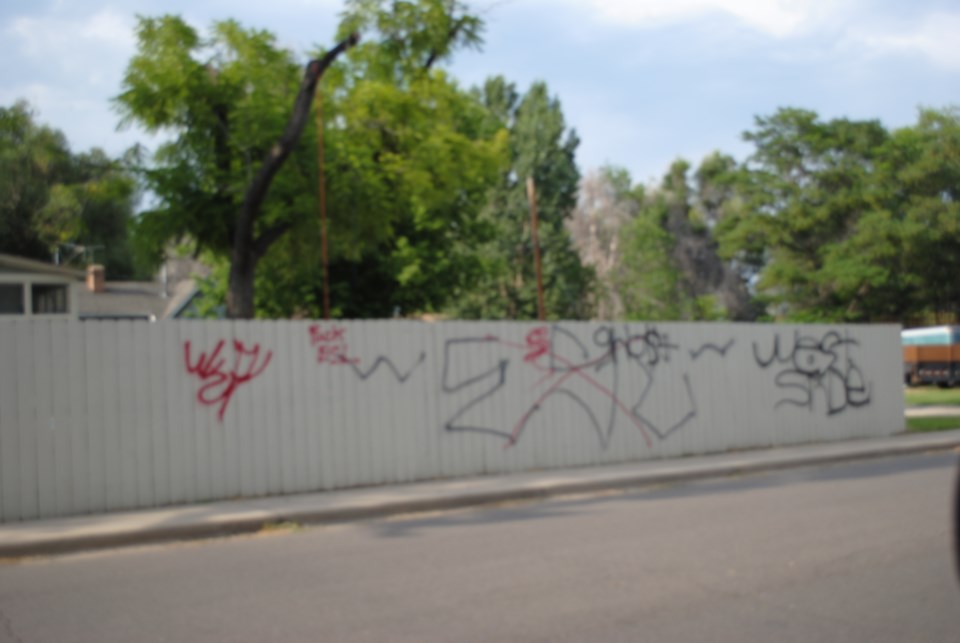This content was originally published by the Longmont Observer and is licensed under a Creative Commons license.
You may have noticed more graffiti in your neighborhood lately, particularly gang graffiti. Sergeant Jason Pitts of the Longmont Police Department's Gang and Crime Suppression Unit (GCSU) says that this is a cyclical problem rather than being a new gang problem. Gang tagging picks up in the summertime when kids are out of school and gangs have more contact with each other. However, there is not an increase in the number of gangs in the area.
In 2005, the City of Longmont recognized they had a gang problem and decided to concentrate on those issues in a targeted manner. They instituted a three-pronged approach which has been successful. The three components of the program are prevention, intervention, and suppression. Longmont police officers now know every gang member that resides in Longmont, and numbers have significantly dropped.
The Longmont police department gang unit is involved in different aspects of curbing gang issues, although the community often only thinks of them being involved in the suppression portion of the program. The gang unit works closely with both GRIP and La Familia Boxing on prevention and intervention. They work with multiple agencies and may help older kids that want to get out of gangs to find employment and housing. On the prevention side, the police department and the division of Youth and Family Services goes into middle and high schools and tries to deglamorize gangs and show kids a better way of dealing with life. This has been a very successful partnership. Parents or school safety officers contact the gang unit when they become concerned about kids becoming involved in gangs which allows the police to work with GRIP to intervene early. Longmont has 33 different types of gangs, but most only have one member. In reality, Longmont has only eight gangs with ten or more members. The major gangs in Longmont are East Side Longmont, Sureños, and Norteños.
There are a few warning signs that a child may be involved in a gang. Children may show an unusual interest in one or two colors of clothing or clothing with a particular logo. They may also use hand signals to communicate with their friends and have a specific drawing they use frequently on their property. Children may come home with unexplained injuries to their hand or knuckles or have other bruises related to fighting. They may have unexplained cash, clothes, or jewelry. There may be negative behavior changes such as withdrawing from the family, staying out late, a decline in school attendance and performance, consistent rule-breaking, and secrecy. If you suspect your child is involved in a gang, call Louie Lopez at Childre, Youth and Family Services at 303-774-3756.
You can recognize gang graffiti because it much less artistic than other graffiti. It usually shows the member’s gang affiliation. It can be thought of as a news source for gangs. Graffiti often shows what is happening in a particular gang or neighborhood. Rival gangs may cross out one gang's tag and put their own up. If a rival gang’s tag has a letter in common with another gang, the rival will often cross out that letter in their own tag. Graffiti may also commemorate a death, show alliances, or mark the scene of a crime. If you experience graffiti on your property, it is important to get it down as quickly as possible. You can report graffiti that you find on your property to the graffiti hotline at 303-774-GEAR (4327). If graffiti is in progress, call 911. The City of Longmont has a person who removes graffiti on city property, but they also have a waiver for homeowners to get free assistance. The homeowner is free to remove the graffiti on their own, but the city can provide materials or labor although the style of removal available is limited. Contact Longmont Code Enforcement for more information at 303-651-8695.



